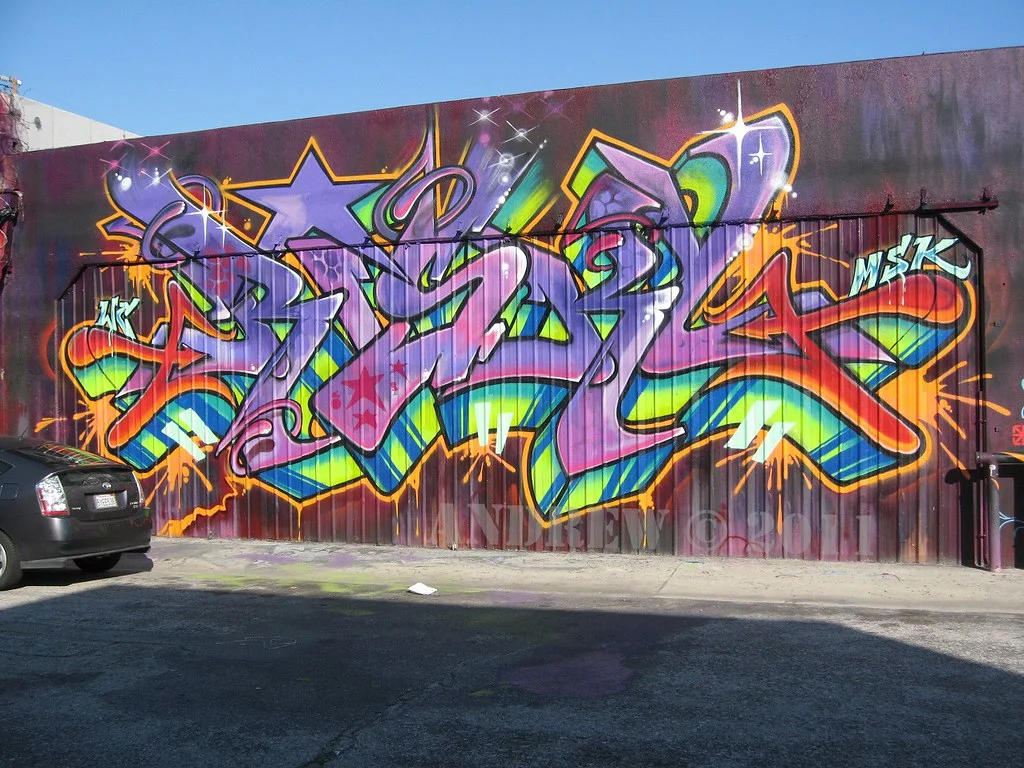The term grafitada (in Spanish/Portuguese) is related to graffiti (i.e. written or painted markings), but in an automotive / industrial context, “ducha grafitada” refers to a protective graphite-based coating applied to the underside (chassis, frame, metal parts) of vehicles
In other words, rather than street art, “grafitada” in this setting means “graphited” — i.e. metal surfaces are coated with a mixture containing graphite particles plus lubricant/oil base to provide anti-corrosion, lubrication, and protective barrier functions.
The “ducha” (Spanish for “shower”) refers to the process of spraying or immersing the vehicle’s underside with this protective mixture. This technique is common in automotive maintenance, especially in regions where road salt, humidity, moisture, or mud can accelerate rust and corrosion.
Thus, grafitada in this usage is shorthand for “applied with graphite coating / spray” on parts of a vehicle.
Why Use Grafitada? Benefits & Purposes
Applying a grafitada (graphite coating) to key parts of a vehicle offers multiple benefits. Here are the key advantages:
-
Anti-corrosion / rust protection
The graphite layer acts as a physical barrier against moisture, oxygen, salt, and chemicals. In wet climates or in areas where roads are salted, this helps prevent rust and oxidation. -
Resistance to abrasion & wear
The solid graphite particles help reduce friction and wear on metal surfaces exposed to debris, rocks, or vibrations under the vehicle. -
Improved durability of chassis & underbody parts
By shielding vulnerable metal parts (frame rails, suspension arms, cross members), the coating prolongs service life. -
Moisture & mud repellence
The coating helps repel water, mud, and grime, making cleaning easier and reducing buildup that can trap moisture. -
Noise damping and sound insulation
In some applications, the layer may slightly muffle road and vibration noise by filling small surface irregularities.
Because of these benefits, grafitada is often recommended periodically, especially in harsh environments, to maintain structural integrity and reduce long-term maintenance costs.
How Grafitada Is Applied: Process & Best Practices
To achieve good results with grafitada, the application process must be done carefully. Below is a typical workflow and best practices.
1. Cleaning & Preparation
-
Thorough washing: remove dirt, mud, grease, and debris from the vehicle’s underside.
-
Degreasing: use a solvent or degreaser to eliminate oils or residues that might block adhesion.
-
Drying: ensure surfaces are completely dry before applying the coating.
-
Masking sensitive parts: protect brake components, electrical parts, and engine openings so the coating does not interfere.
2. Mixing the Grafitada Compound
The coating mixture is prepared with:
-
Graphite particles (fine, high purity)
-
Oil or synthetic lubricant base
-
Additives / corrosion inhibitors
-
Possible resin or binder to help adherence
The mixture must be homogeneous so that graphite disperses evenly.
3. Spraying / Application (“Ducha”)
-
Use spray equipment calibrated for even misting, not high-pressure jets.
-
Start from one end (e.g. front to back) and work methodically to cover all metal surfaces.
-
Overlap passes to ensure no bare spots.
-
Apply at recommended thickness (too thin is ineffective; too thick may form drips).
4. Curing / Settling
-
After spraying, allow the coating to settle / bond. Some formulations may require a short drying time under ambient conditions.
-
Avoid subjecting the vehicle to water or stress until the coating is set.
5. Inspection & Touch-Ups
-
Inspect thoroughly for missed areas or thin spots.
-
Touch up edges, overlaps, or joints where coating may have been weak.
-
Ensure no coating is left on moving or contact surfaces where friction or heat is critical.
6. Periodic Reapplication
-
Depending on driving environment (salt, sand, humidity), grafitada may need reapplication every 1 to 2 years or as part of major maintenance.
When done properly by trained technicians, grafitada offers durable protection without interfering with vehicle operation.
Applications, Use Cases & Industries
Grafitada is useful in many automotive and industrial settings. Here are key domains where it’s applied:
Automotive / Vehicle Underbody Protection
-
Passenger cars, SUVs, and trucks often receive grafitada to protect the frame rails, floor pans, suspension arms, differentials, and cross-members.
-
In regions with seasonal road salt (for de-icing) or heavy rain, it’s especially valuable.
Heavy Equipment & Off-Road Vehicles
-
Bulldozers, excavators, agricultural machinery, mining vehicles benefit significantly from grafitada because they are exposed to abrasive terrain, mud, and water.
-
The coating helps reduce wear and corrosion under harsh conditions.
Maritime / Marine Equipment
-
Equipment used in coastal / saltwater environments may also use grafitada or similar graphite coatings to resist salt corrosion and spray.
-
While marine-specific coatings exist, grafitada concepts can overlap with anti-corrosion marine paints.
Industrial Machinery & Structural Metal
-
In factories or plants where metal structures are exposed to humidity, steam, or chemicals, applying a graphite coating helps preserve structural elements.
-
Metal supports, racks, pipelines, or exposed frames may be protected this way.
Aftermarket / Maintenance Services
-
Many automotive workshops offer “grafitada underbody service” as a value-added option for longevity.
-
This can also be marketed to vehicle owners in regions where corrosion is widespread.
Thus, grafitada is not limited to one vehicle type but has broad use in preservation of metallic parts across many sectors.
Limitations, Risks & Considerations
While grafitada offers strong advantages, it also comes with limitations, risks, and factors to consider.
Not a Substitute for Regular Lubrication
The coating is protective, not designed to replace dedicated lubricants in bearings, gears, or moving joints. The objective is barrier protection, not dynamic lubrication.
Adhesion Failures if Improper Application
If surfaces are insufficiently cleaned or dried, the coating may not adhere properly, leading to peeling, flaking or areas of exposure.
Overspray / Contamination Risks
If the spray drifts onto parts like brake rotors, sensors, or electrical connections, it may cause performance issues. Masking and care are essential.
Maintenance and Wear Over Time
Even though the coating is durable, it can degrade under impact, abrasion, or salt exposure. Parts might need reapplication or inspection.
Compatibility with Rust / Damage
If the metal already has significant rust or pitting, grafitada will not fully restore structural damage — it works best on sound metal. Pre-treatment such as rust removal or metal repairs may be required.
Cost & Added Maintenance
There is a cost in labor and materials. For vehicles in mild climates, the return on investment must be weighed. Also, occasional touch-ups are needed.
Environmental / Health Precautions
Ensure that the spray and airborne particles are handled safely, with proper ventilation and protective equipment, especially for finer graphite dust.
When understood and applied properly, grafitada is a valuable maintenance technique — but it is not a miracle fix and should be part of a broader prevention strategy.
How to Choose a Grafitada Service / Product
If you plan to have grafitada done or buy a product for self-application, here are tips to select wisely:
1. Quality of Graphite & Additives
-
Look for high purity, fine graphite particles with uniform size.
-
Quality corrosion inhibitors in the formula.
-
Bind agents or resins that aid adhesion without brittle fractures.
2. Reputation & Experience of Service Provider
-
Choose workshops or providers with experience in underbody coatings.
-
Ask for past jobs, references, or examples.
-
Ensure they follow proper preparation and masking protocols.
3. Coverage Guarantee & Warranty
-
Good providers may guarantee a certain coverage area or period before needing reapplication.
-
Inquire whether touch-up services are included.
4. Compatibility with Your Vehicle & Environment
-
For coastal, humid, or salt environments, pick stronger formulations.
-
For light-duty use, standard coatings may suffice.
5. Cost Efficiency & Value
-
Compare cost per unit area (e.g. cost per square meter) rather than flat price alone.
-
Factor in reapplication intervals, longevity, and expected benefits (rust prevention, resale value).
6. Application Equipment & Technique
-
Use spray equipment suited for uniform application (not heavy spray that causes runs).
-
Proper masking and controlled environment (dry, dust-free) improves quality.
By evaluating these factors, you can get a grafitada job or product that offers lasting protection and good return on investment.
Conclusion
“Grafitada” or ducha grafitada is a powerful protective method in the automotive and industrial world, leveraging the lubricating and barrier traits of graphite to preserve metal surfaces. When properly cleaned, applied, and maintained, a grafitada coating can greatly extend the life of chassis, frames, and exposed metal components by resisting corrosion, wear, moisture, and surface damage.
However, its effectiveness depends heavily on correct preparation, application technique, material quality, and periodic inspection. It complements — but does not replace — regular maintenance or lubrication in moving parts.





